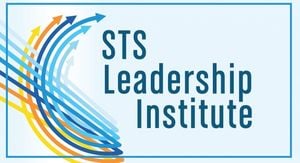Animals often display rapid changes in their actions when faced with unexpected outcomes, indicating complex adaptive behaviors driven by their learning processes. A recent study explores how these adaptations play out within the brain's striatum, illuminating distinct strategies guiding decision-making during these abrupt shifts.
The research, which spanned multiple reversal learning experiments with different rodent species, challenges traditional reinforcement learning models by demonstrating their inadequacy when predicting behaviors following unexpected outcomes. Instead, it introduces the support-stay and conflict-shift bias paradigm, which differentiates action-selection strategies contingent upon outcome expectations.
According to the study, led by researchers at various institutions, the support-stay bias promotes persistence with previously rewarding actions, whereas the conflict-shift bias encourages switching to alternative choices following unexpected results. Through behavioral dynamics profiles, the study found significant differences in how rodents respond to expected versus unexpected outcomes, supporting the hypothesis of event-driven behavioral adaptation.
'Unexpected outcomes initiate complex behavioral dynamics associated with fast adaptation,' the authors note, emphasizing the need for models to adapt to these dynamic contexts. The introduction of the support-stay, conflict-shift (SSCS) model proposed by the researchers showcases how it more accurately reflects the behavioral patterns of rodents compared to existing models.
The researchers employed various techniques, including trial-by-trial analysis and neural recordings, to validate their model's predictions. Electrophysiological data revealed distinct firing patterns among medium-spiny neurons (MSNs) within the striatum, corresponding to the identified biases, highlighting its central role as the arbiter between action-selection strategies.
These findings carry important implications for our broader comprehension of cognitive flexibility and learning. By shedding light on how unexpected events influence decision-making and highlight the striatum’s role, the research opens new avenues for investigating maladaptive behaviors evident in various psychiatric disorders.
'The striatum appears to encode multiple decision variables, each emphasizing different aspects of previous experiences,' the authors remark. They suggest these insights could pave the way for developing targeted interventions to address cognitive deficits associated with striatal dysfunction.
This groundbreaking research not only enhances our knowledge of animal behavior but also contributes significantly to the overarching narrative of how decision-making processes may evolve under unpredictable circumstances, prompting future inquiries examining similar neural mechanisms across different species.



